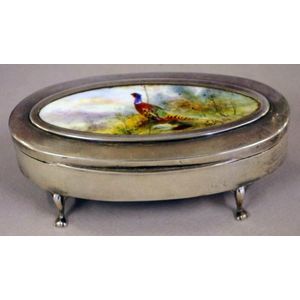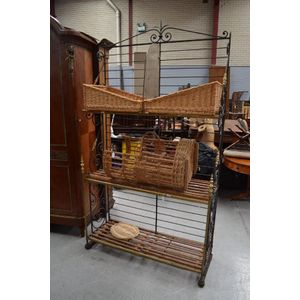Khymer Bronze Uma Figures, 12th Century
You must be a subscriber, and be logged in to view price and dealer details.
Subscribe Now to view actual auction price for this item
When you subscribe, you have the option of setting the currency in which to display prices to $Au, $US, $NZ or Stg.
- Bronze - An alloy of copper and tin, traditionally in the proportions of about 9 parts of copper to 1 part of tin.
The discovery of bronze in Western Asia in the 4th century enabled people to create metal objects which were superior to those previoulsy possible because of its strength and hardness, and it has been used throughout the world for weapons, coins, tools, statuary and other decorative items.
It is very fluid in a molten state, and its hardness, strength when set, and non-corrosive properties makes it most suitable for casting sculpture. - Circa - A Latin term meaning 'about', often used in the antique trade to give an approximate date for the piece, usually considered to be five years on either side of the circa year. Thus, circa 1900 means the piece was made about 1900, probably between 1895 and 1905. The expression is sometimes abbreviated to c.1900.
- Patination / Patina - In broad terms, patination refers to the exterior surface appearance of the timber, the effect of fading caused by exposure to sunlight and air over the course of a century or more, changing the piece to a soft, mellow colour.
As patina is very difficult to replicate, it is one of the most important guides to determining the age of furniture.
Patina is also the term applied to the bloom or film found on old bronzes due to oxidisation.
This item has been included into following indexes:
- Khmer (Cambodia)
Visually similar items

Sterling silver footed trinket box, with handpainted Royal Worcester pheasant ceramic insert, signed Jas Stinton, hallmarked Birmingham 1913, 12 cm wide approx., ceramic cracked

Fine antique French wrought iron and brass banded bakers rack with control glass panel to the top. With fitted wooden slats& baguette baskets, approx 240 cm high, 132 cm wide, 48 cm deep

A pair of diamond earrings, each four-claw set stud set with a brilliant diamond and a further detachable brilliant cut diamond drop.14ct white gold and platinum. Estimated total weight 2.70 carats

Victorian sterling silver dessert/fruit knife, fork and spoon, London 1869
